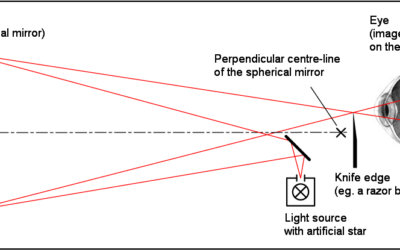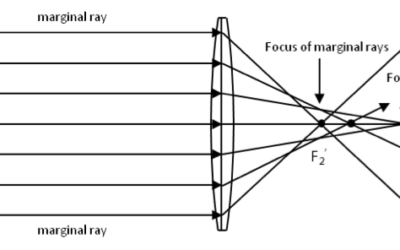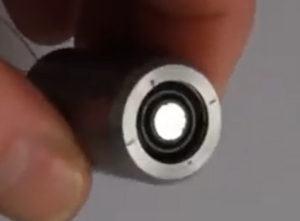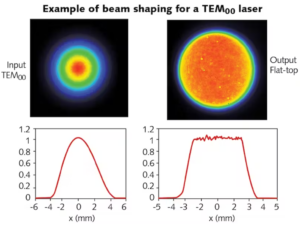One of the most common lens system designs- especially in photography- is what is called a Double Gaussian lens. There are several different configurations, and close to 90 different patents have been filed from 1936 – 2010, but a basic double gaussian lens design configuration is the one shown in Figure 1.
This simple Gauss lens consists of two positive meniscus lenses (a flint and a crown), the double Gauss duplicates this configuration and flips it. Such that the positive meniscus lens points toward the object and the negative towards the image. To better understand the use of flint and crown optical elements in a system please read our article about doublet achromatic design

One of the reasons this lens design configuration is so popular is that it corrects many of the major image aberrations with a relatively low number of optical elements.
3 Important Design Considerations
To better design a double Gauss, we need to understand it. The rear elements can be designed to obtain the desired focal length and correct four aberrations: Petzval sum, spherical aberration, chromatic aberration, and astigmatism. If we then mount these components symmetrically about a central stop, we correct in addition the three transverse aberrations: coma, distortion, and lateral color.
1.Choose the right glass
Be careful in the choice of glass for your optical elements. The V difference affects how aberrations can be corrected. If the V difference is too great the negative lens will be too weak to enable us to correct the other aberrations. A good choice could be:
(1) Dense flint: nD = 1.6170, V = 36.60, nF = 1.62904, nC = 1.61218
(2) Dense barium crown: nD =1.6109, V=57.20, nF = 1.61843, nC = 1.60775
2.Power, spherical and Petzval
Start solving for power (focal length) and correct for spherical aberration and Petzval aberration. These three design parameters are closely related. The equations that need to be used are outside the scope of this blog. To correct these aberrations it is recommended to change the thickness of the meniscus elements and the change spacing between Gaussian elements. Once the aberrations are minimized. Curvature of the positive elements needs to be adjusted to restore the original focal length.
3.Chromatic, spherical and field of curve
We now can proceed to correct for chromatic aberrations and Petzval sum by changing the outer spaces and the powers of the positive elements, maintaining symmetry at all times. One way to achieve this is by strengthening both crown elements ins small increments (around 1.5%) and decreasing the outer spaces (around by 0.05 mm}. Once we obtain an adequate value for these aberrations we can proceed to correct the spherical aberration and tangential field curvature by bending the elements in a symmetrical manner.
Conclusions
To fully design a double Gauss lens requires many calculations evaluating ray diagrams using the design steps we describe. If you are interested in digging deeper into this topic I recommend Warren Smith’s Modern Lens Design and Kinglake’s Lens Design Fundamentals. Or get in touch with us, we can help you with your design needs.







